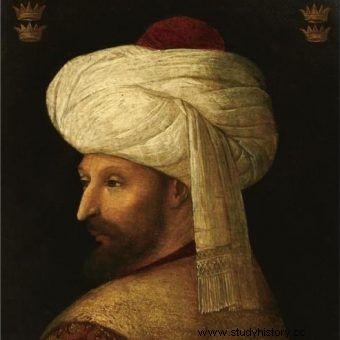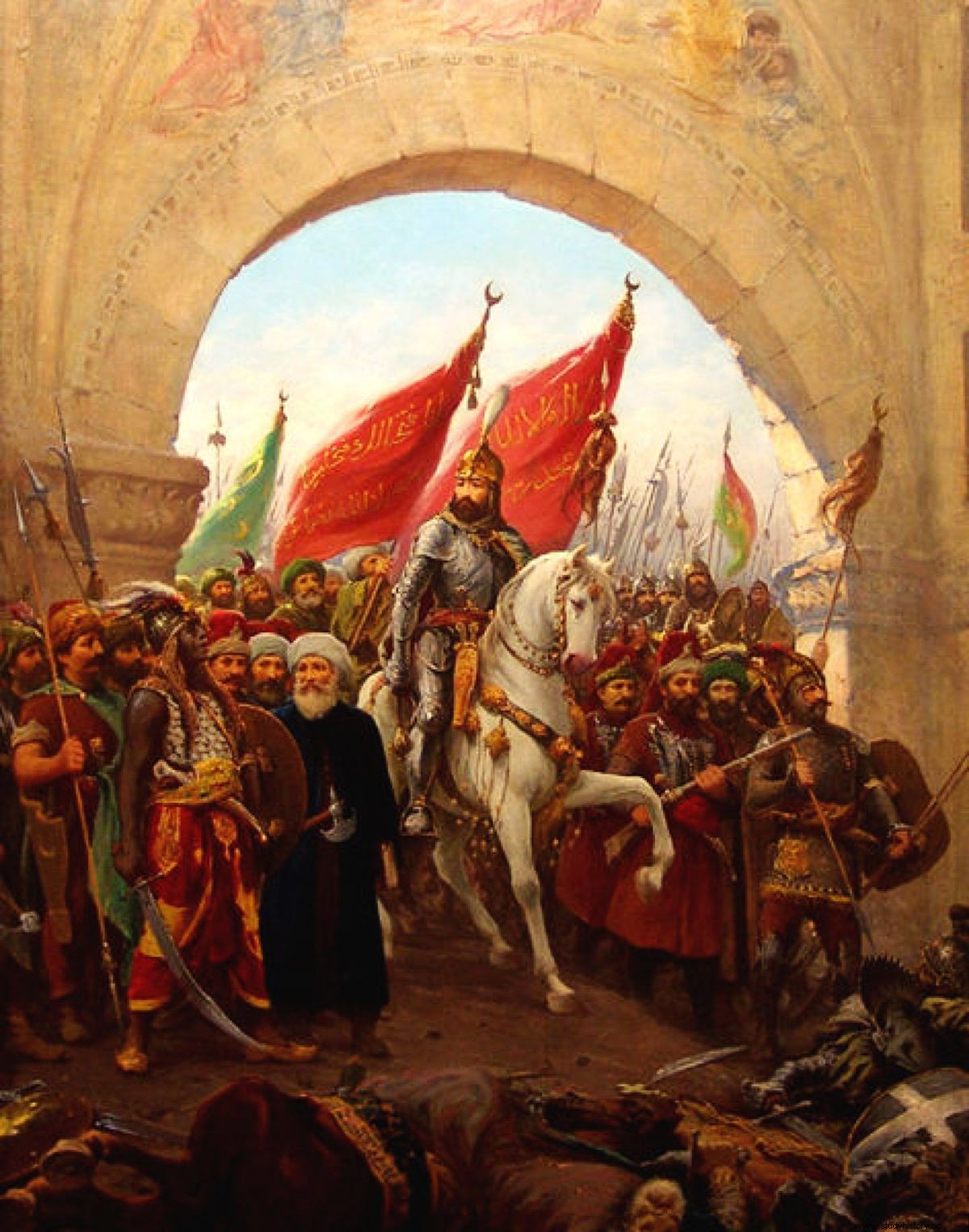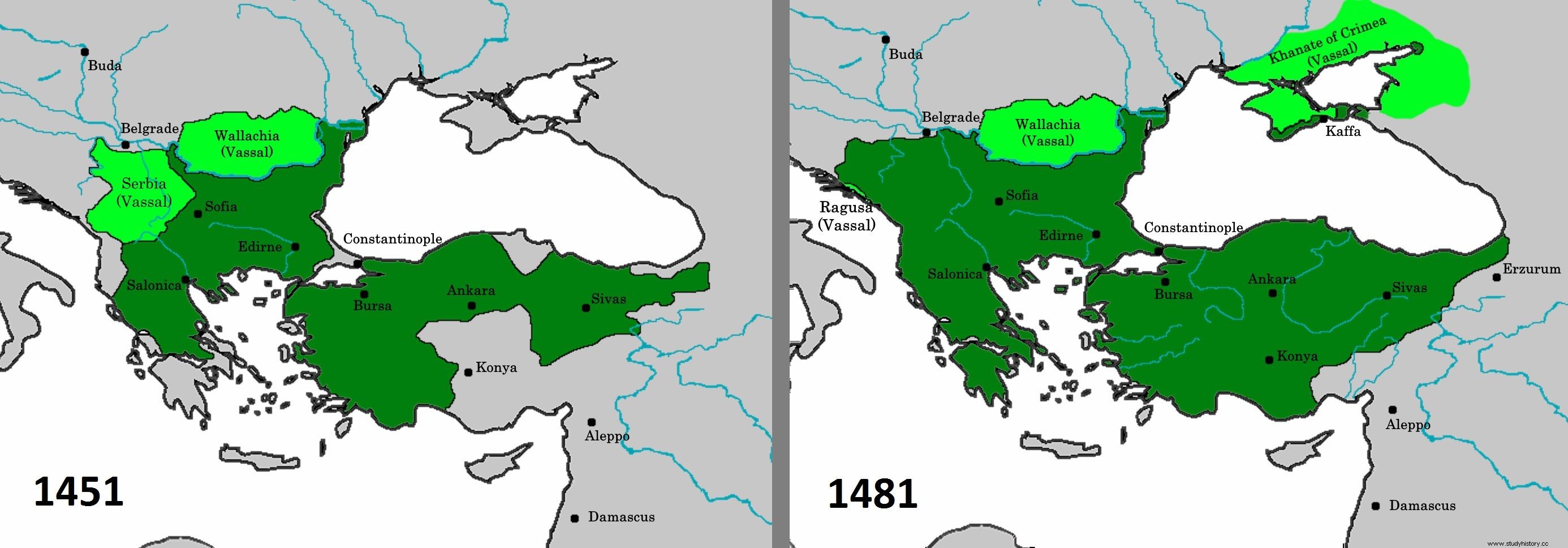He led to the fall of the empire lasting for millennia. He conquered countries inhabited by followers of three different religions. He was responsible for the most audacious invasions and sieges. Are historians silent about his successes just because… they don't like his faith?
Mehmed II, called the Conqueror, was eager to attack Constantinople at the age of 14. A more reserved father stood in the way of these plans. It was only after his death that the young sultan could begin preparations for the conquest of the last fortress of the Byzantine Empire. The pearl of the empire was already the last scrap of the country, tracing its proud history back to the ancient Romans. The year was 1451. Mehmed began by erecting Rumeli Hisar Castle, which was to cut off the Imperial capital from sea supplies. The fortress was called Bogaz Kesen by the people, meaning Cut Throat.

With his conquests, Sultan Mehmed II, the Conqueror, deserved his place among the greatest military commanders in history. Above his portrait by the Italian painter Gentile Bellini from 1480.
The siege began on April 6, 1453. The city was under fire from artillery all the time. The defenders received supplies only thanks to ships entering the Gulf of the Golden Horn, which the Ottoman fleet could not contain. The still powerful Byzantine fleet blocked Mehmed's access to the city. But the Sultan knew what to do. He ordered his soldiers to haul their own ships overland on specially prepared platforms. As a result, the Turkish fleet found itself at the gates of Constantinople and supplies were blocked.
The invaders outnumbered the city's crew by several times, but the Byzantines were still formidable enemies who could use some of the most powerful fortifications in the known world. The final assault began on day 53 of the siege. The sultan sent out a force of poorly armed mercenaries to attack first. The attack lasted several hours and was aimed at fatigue of the soldiers defending the walls. Then the trained Anatolian troops went into battle, but they too were repulsed.

Yes, in the 19th century, the Italian painter Fausto Zonaro envisioned the entry of Mehmed II the Conqueror into Constantinople. In fact, it didn't look so beautiful. The young sultan's army has ransacked the city completely.
In the end, Mehmed himself led the elite Janissary infantry to the very walls. Success was complete. The empire ceased to exist on May 29 and was executed by the 21-year-old ruler of the Ottoman Empire.
Grekofil
Mehmed was an extremely energetic ruler who spent almost his entire life conquering. There are no films about his attack on Constantinople, but the episode is well known to medieval fans. But what about the rest of the sultan's career? It turns out to be no less colorful!
During armed expeditions in 1454 and 1455, he defeated the Serbian army and took control of the silver and gold deposits in Novo Brda. The income from the mine fed the sultan's war machine. In the years 1458-60, the "Conqueror" conquered the rest of the Peloponnesian Peninsula, thus putting an end to the intrigues of the spoiled elite of the former Byzantine Empire. Almost all of Greece and many islands in the Aegean Sea came under Ottoman rule.
Slayer of Dracula
Mehmed was a verbal man. He kept his promises and punished those who betrayed him. Vlad the Impaler, the famous Dracula, the ruler of Wallachia, recognized the sovereignty of both the Ottoman Empire and the Hungarians. In return, he was promised peace by both rulers. However, when Vlad began to harass the Ottoman lands with invasions, the "Conqueror" set off against him, conquering almost all of Wallachia and enthroning a king favoring him. The campaign was not easy (or uncompromising), but the famous Dracula only won the first act of war. In the second, he has already suffered a disastrous defeat. Anyway, thanks to his own subjects.
Soldier and admiral
Venice, Hungary, Albania and its famous leader Skanderbeg formed a coalition to stop the development of the sultan's power. The Pope announced a crusade, help was promised by the Crimean Tatars, talks began with the Turkmen states in the east. The rulers of the West did almost nothing when Constantinople sent out desperate pleas for help. They only woke up when the enemy reached the gates.
Your country is in danger from several fronts? Has an international alliance formed against you? Mehmed saw it as a perfect excuse for… further conquests. He sent the Grand Vizier with the army to the Peloponnesian Peninsula, where he dealt with the army of the Venetians, and himself defeated the Hungarians in the Balkans and went on the counter-offensive, plundering their lands.
The "Conqueror" commanded not only on land, but also at sea. In 1470, his fleet occupied Negroponte, the main base for Venetian ships.
Artilleryman
In 1472, Uzun Hasan - the Turkmen sultan Aj Kojunlu - at the head of a large army rearmed by the Venetians, attacked the Ottoman Empire in Asia Minor. Mehmed moved to meet him. Both armies met in the Otluk Beli lowland on August 11, 1473.
The "Conqueror" loved technical innovations and tried to equip his army with them, while Hasan's army consisted of traditional units of light cavalry. The clash lasted eight hours and ended in a complete defeat of the attackers. The Turkmen cavalry could not be compared to artillery and firearms. The victory brought territorial benefits to the Ottoman Empire, as did the peace signed with Venice in 1479.
Fear of the Romans
The Venetian fleet was considered the most powerful in the Mediterranean. After the triumph over it, Mehmed decided to implement a bold plan to conquer the Apennine Peninsula. Ottoman ships laid siege to Rhodes, the last bastion of Christianity in the Aegean Sea, defended by the Order of St. John. Meanwhile, a military expedition that took the city of Otranto landed in southern Italy. The people of Rome panicked. The Pope considered fleeing north.

The territory of the Ottoman Empire before and at the end of the reign of Mehmed II the Conqueror. Fighting on several fronts, he won new lands for his country.
Who knows how the fate of Christian Europe would have happened had it not been for the sudden death of Mehmed. His admiral turned immediately, heading towards Istanbul to join the fight for the succession of the descendants of the "Conqueror."
Conqueror
During his 30 years of reign, he annexed countless lands to the Ottoman Empire. He conducted 19 war campaigns. He paid tribute to the Crimean Khanate. He took Albania. He defeated Stephen the Great, ruler of Moldova, and plundered his country. He conquered the southern coast of the Black Sea. He took the last Byzantine enclave in Trabzon. In 1463 he conquered Bosnia, with the help of the Christian sect of the bogomiłów. Its followers preferred the Ottoman rule to the forced conversion to Catholicism.
He did not always win, but after each defeat he would come back to succeed elsewhere. He fought numerous enemies on several fronts simultaneously. He commanded land and sea. The Ottoman Empire started its golden age thanks to him. He deserved a place alongside the greatest military commanders of all time.
Bibliography:
- Roger Crowley, Constantinople:The Last Great Siege, 1453 , Faber and Faber, London 2009.
- John Freely, The Grand Turk:Sultan Mehmet II-Conqueror of Constantinople and Master of an Empire, The Overlook Press, New York 2009.
- Alexander Mikaberidze, Conflict and Conquest in the Islamic World:A Historical Encyclopedia, ABC-CLIO, 2011.
- Jan Reychman, History of Turkey, National Institute Ossoliński, Wrocław 1973.
- Stanford J. Shaw, History of the Ottoman Empire and the Turkish Republic. Volume I:1280-1808 , Wydawnictwo Akademickie DIALOG, Warsaw 2016.
- Marian Witasek, Constantinople 1453, Bellona Publishing House, Warsaw 2008.
